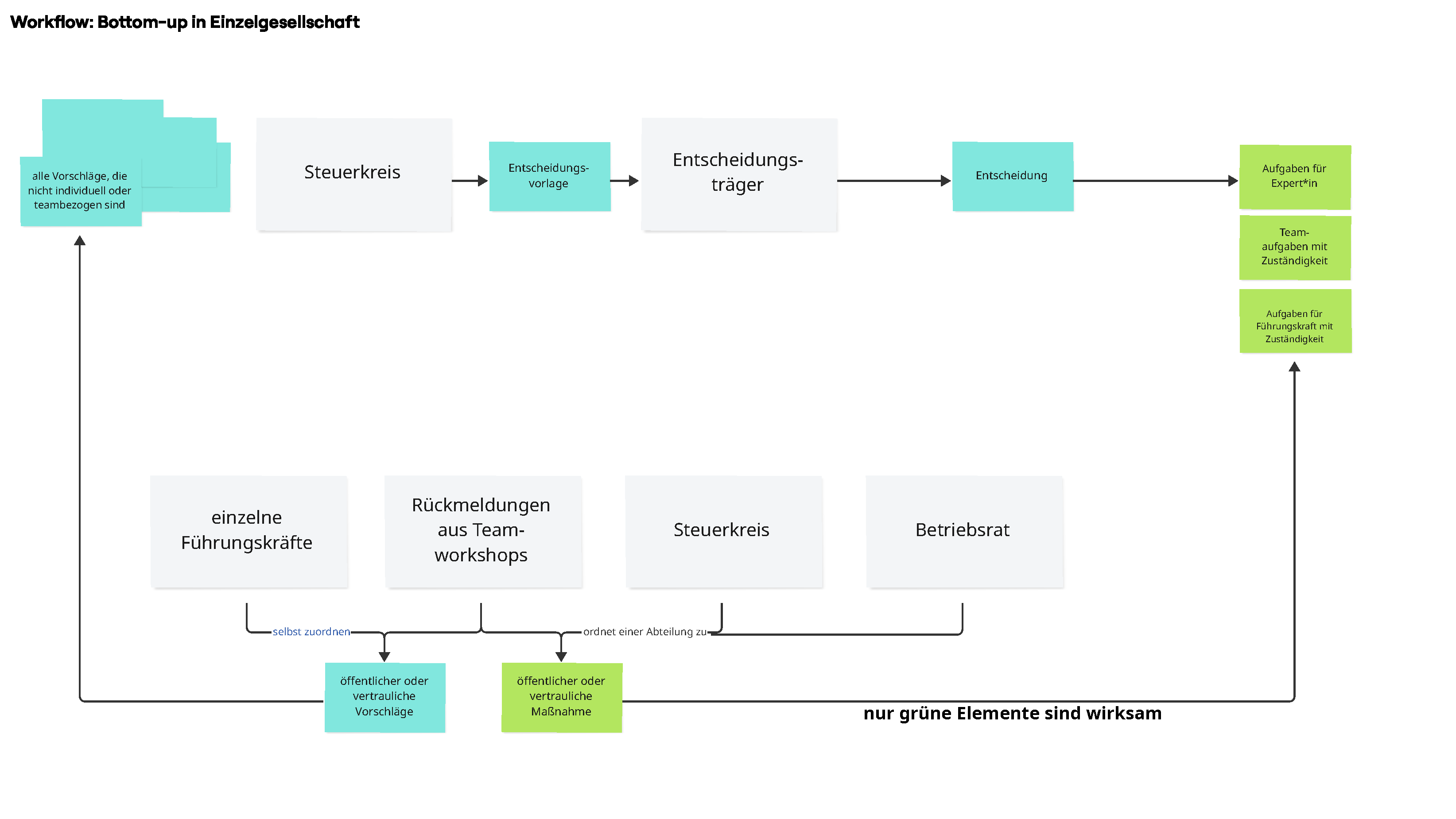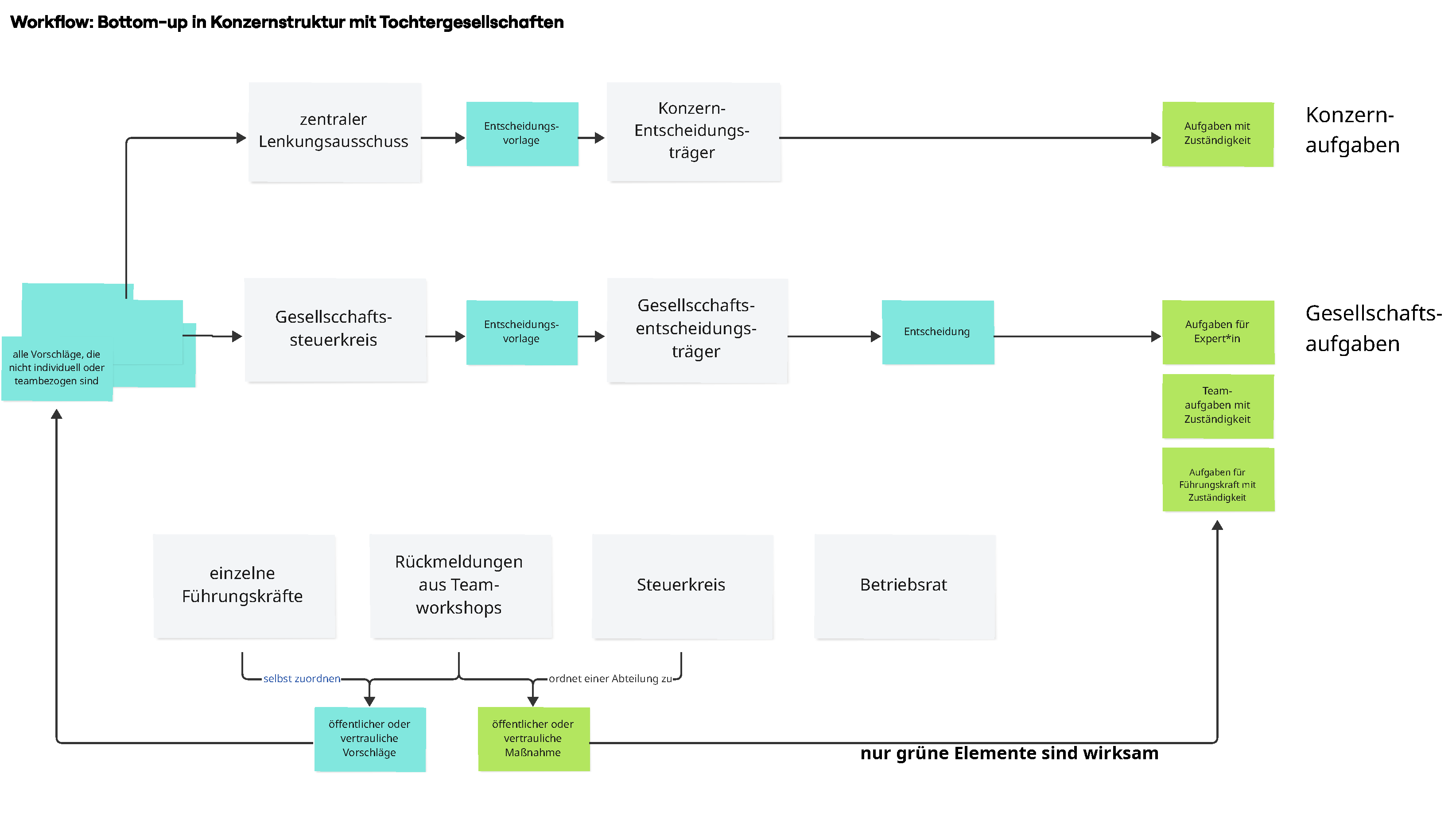Note on the Legal Implementation of Risk Assessment
As a member of the steering committee, you ensure that the psychological risk assessment (GBU Psyche) is carried out in a legally compliant manner according to the GDA guidelines. This means: You ensure that stress factors are systematically collected, documented, and evaluated and that appropriate measures are derived from them. Only in this way are the legal requirements met.
The goal must always be that decided measures are documented in the portal with concrete responsibility and an implementation date, and their implementation has been confirmed. Everything that gets stuck before, in unprocessed or unassigned suggestions or decision templates, is considered not done and has no legal relevance.
Process and Background Knowledge
The steering committee bundles all suggestions from the department workshops, consolidates them into decision templates, and ensures that measures are implemented and progress is monitored. Below you can see the general workflow model:
Workflow: Bottom-up in Single Company

Summary:
- Individual managers & team workshops generate public or confidential suggestions.
- You assign these suggestions to your department (→ green measure card).
- The steering committee reviews all suggestions and creates a decision template from them.
- Decision makers make decisions and derive tasks for experts, teams, or managers.
- Only the green elements (decision templates & tasks) are then effective and flow back into the portal cycle.
Workflow: Bottom-up in Corporation with Subsidiaries

Summary (Corporate Structure):
- In addition to the local steering committee, there is a corporate steering committee and possibly company steering committees.
- Cross-cutting issues are condensed into corporate decision templates in the corporate steering committee.
- Process: Suggestions → Steering Committee → Decision Template → Corporate Decision Makers → Tasks with Responsibility.
The Four Phases of Your Work
1. Result Analysis & Measure Suggestions
What happens?
- Steering committee reviews all incoming suggestions in the portal.
- Document first structured notes, ideas, and solution approaches.
- Conduct conversations with managers, works council, subject matter experts.
- Prepare notes on concrete suggestions.
- Assign active suggestions to respective organizational units.
- Organize workshops through external moderators.
Your Tasks
- Distribute responsibility by organizational units: Intensive analysis, create and assign critical groups as confidential suggestions.
- Discuss findings: Which teams need in-depth interviews? Set dates and questions.
- Conduct conversations: Document results in the action module (→ measure suggestions that only apply to one organizational unit).
- Merge insights: Decide whether further workshops are needed.
- Derive cross-cutting measures: Assign suggestions correctly and sort into appropriate categories.
2. Create Decision Templates
What happens?
- Bundle all measure suggestions from workshops by topic.
- Merge redundant or similar suggestions into one template.
- Formulate decision templates (goal, background, solution recommendation).
- Add documents, responsibilities, and additional information.
- Coordinate across the corporation (for corporate committees).
Your Tasks
- Review & Bundle: Cluster suggestions by topic.
- Formulate: Clarify what needs to be decided (cost commitment vs. permission vs. final decision).
- Discuss: Coordinate format, providers, implementation logic in working groups.
- Assign decision makers: Who makes the decision on which template?
- Corporate coordination: Bring insights from all steering committees into corporate-wide working group meetings.
3. Make Decisions & Assign Measures
What happens?
- Decision templates are presented to decision makers.
- Questions clarified, possibly individual conversations with high-ranking decision makers.
- Document decisions.
- Positive decisions → derive & assign tasks.
Your Tasks
- Briefing & Clarification: Prepare decision makers before they reject prematurely.
- Adapt templates: Incorporate feedback, ensure comprehensibility.
- Assign tasks: Only rough blocks, no detailed project management.
- Establish responsibilities: Who implements what by when?